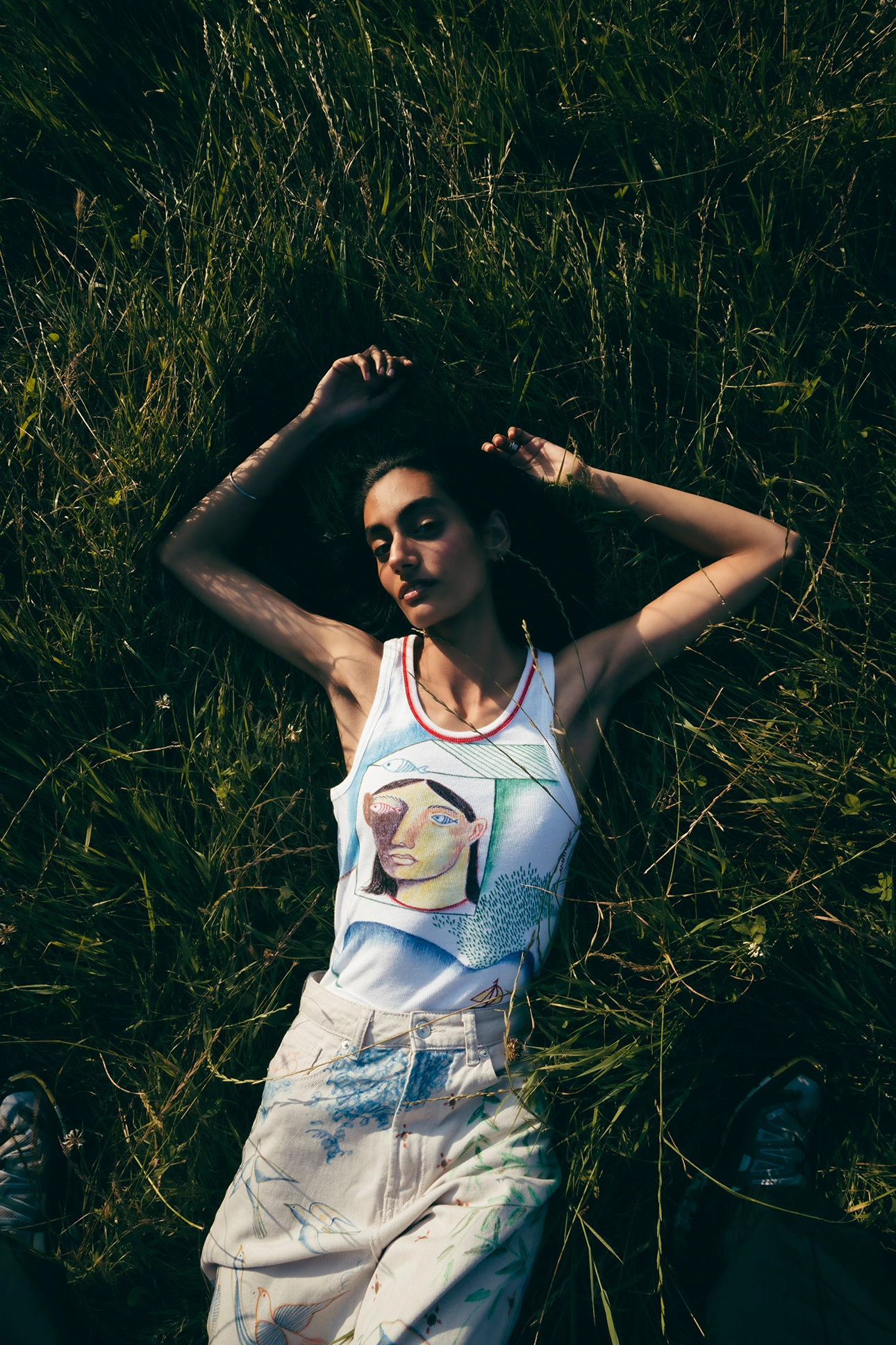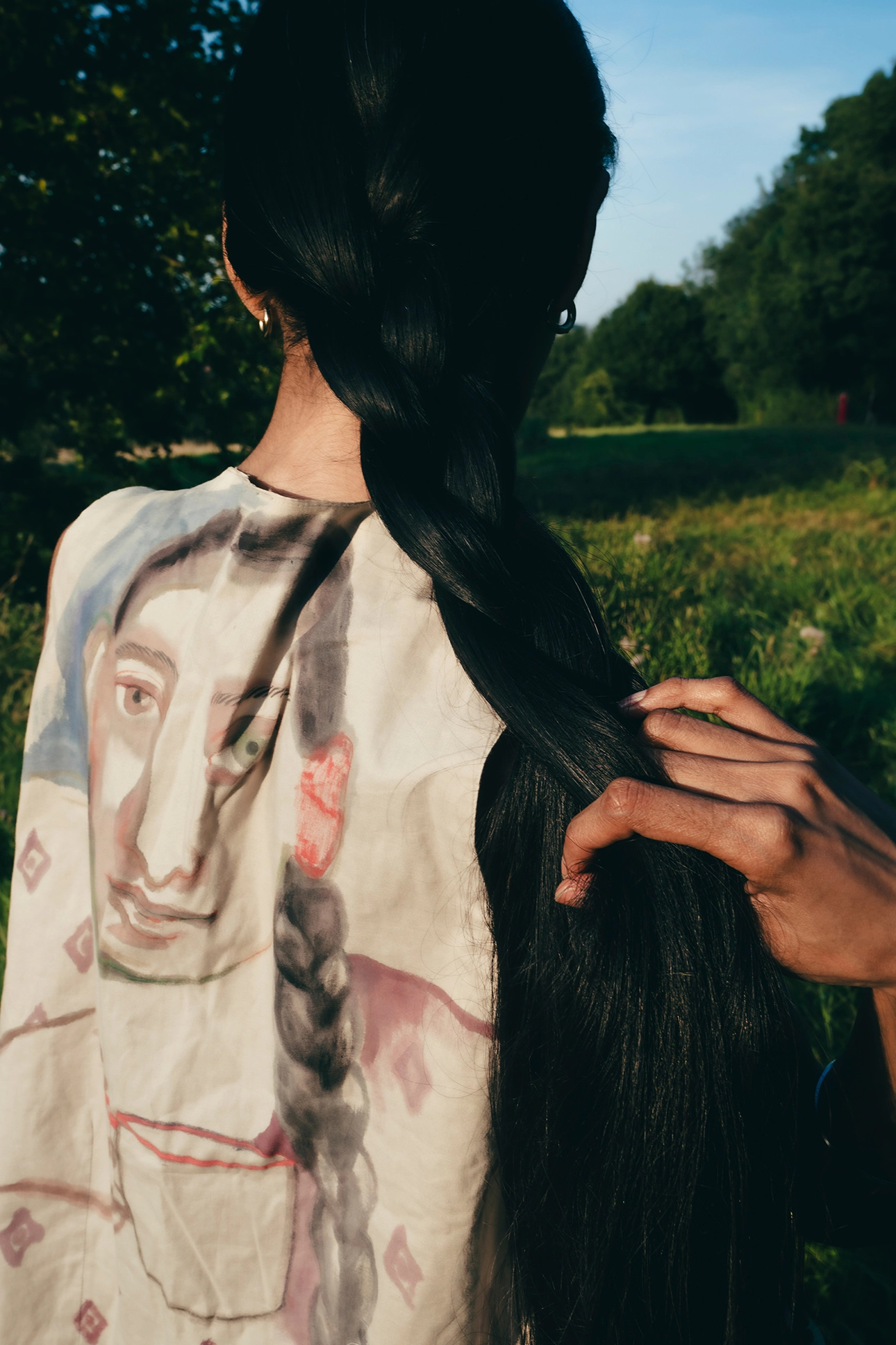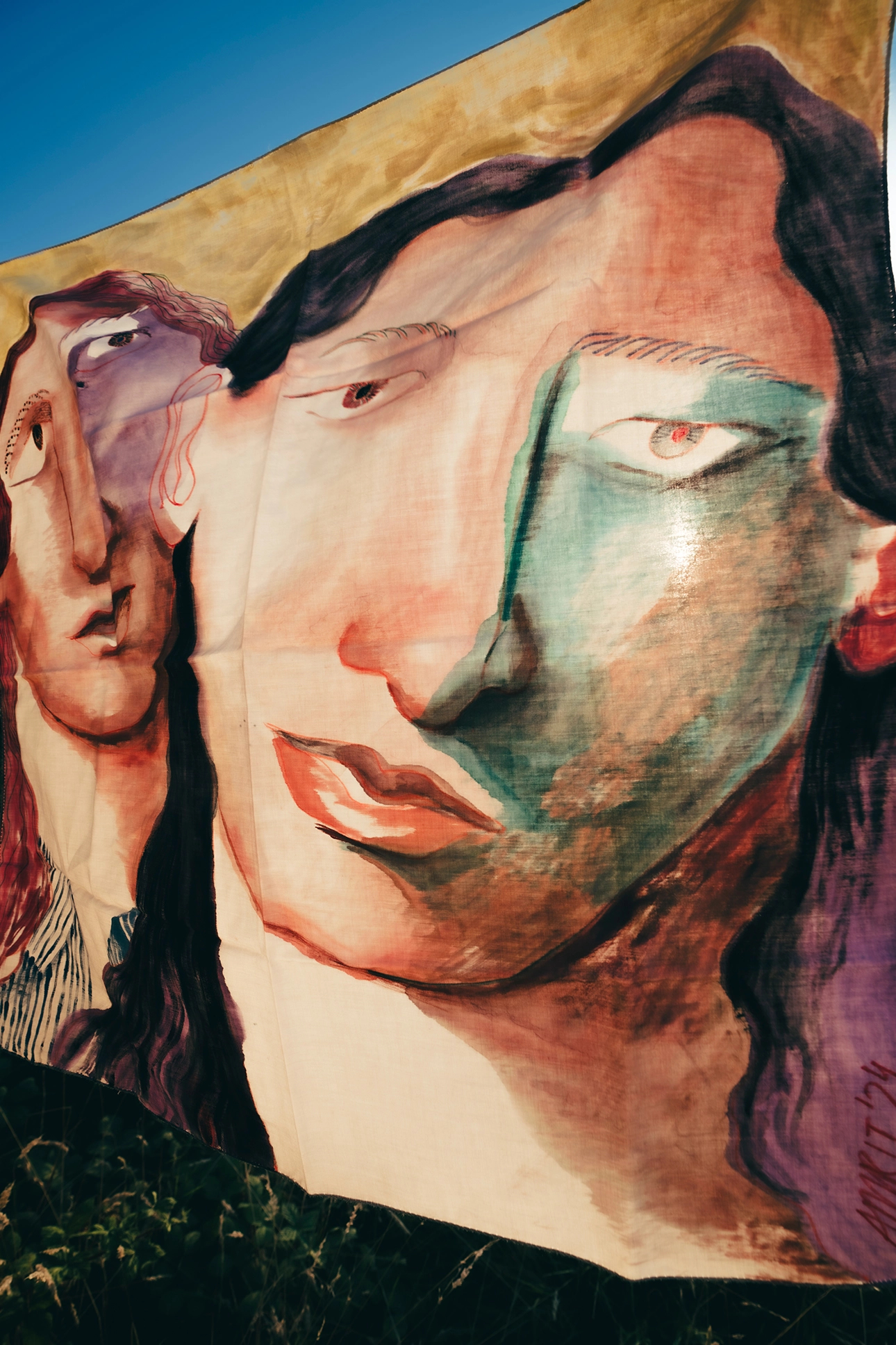Double Roles: Amrit Singh Sandhu
Though modelling as a career has its doses of glitzy glamour, it is fast, demanding and fleeting. Verve speaks to four models who have sensitively expanded their repertoire and enriched their lives by simultaneously pursuing their passion for fashion and the arts
Amrit Singh Sandhu, London
Oil Paintings and Textile Art

Models are — and have always been — the visible face of the fashion and beauty industries. Injecting a certain je ne sais quoi into the brand identity with an ease that almost masks the pains taken to execute the vision of the creative heads, they are one of the primary draws that attract the attention of the viewers — and, by extension, the buyers. But it is well known that despite their integral function to these industries, their “shelf life” is limited.
The digital content business, driven by algorithms, is under constant pressure to produce fresh imagery, leading the fashion industry to churn out content at a hectic, unsustainable pace. The number of fashion collections presented annually has increased from two to four to, in some cases, double digits. Designers, who choose to abide by the same visual codes for more than three seasons — that is, about a year — are declared one-trick ponies by audiences online. The need to be distinctive on platforms frequented by billions drives the image makers of the fashion industry to always be on the hunt for new and, often, younger talent. Perhaps the most vulnerable casualties of this cycle are models. Many — designers, stylists, make-up artists, photographers — often have the leeway to switch up aesthetics but it’s often a matter of time before models lose their visual currency. Additionally, and ironically, being a recognisable face may also translate into losing out on the order of the day — the freshness factor — and jobs.
Interestingly, many are simultaneously following their creative interests in the arts to express their inner muse and thus wearing multiple hats. We take a deep dive into the artistic pursuits of four models in an effort to stand out in the clutter.
Excerpts from the conversation….
How did you get into modelling?
I got my modelling assignment when I was in art school in New York. Kim Shui was looking for Asian talent for her New York Fashion Week show and a friend of mine who was working with her encouraged me to attend the casting. I got the assignment and it all began from there. Modelling had definitely been a far-away dream of mine, but one that I never thought I could achieve. Growing up, I didn’t see many models that looked like me working internationally so I never had the confidence to pursue it as a career myself. But I got very lucky with my first job which was so empowering. I was signed on by an agency in 2021 when my mother agent Marie Claire scouted me through Instagram and helped me develop my modelling path.
What role does social media play in your career?
I was scouted and signed through social media. And all the work I did before — informal and test shoots as an independent model — was through people reaching out on Instagram. In today’s age, social media has become so big and vital that it is difficult to imagine your career growing without it. It reaches audiences all over the world. And the funny part is that you never know who is watching! But I also consider the space to be personal wherein I’m aware of my reach and my responsibility to use it wisely.
It’s a platform to present myself and express my vision. It can be overwhelming at times, I try not to let it overtake my thoughts but for it to just be a tool.
What are the factors that you bear in mind while positioning yourself and your work digitally?
When it comes to presenting or sharing my art online, my goal is to show that I’m open to conversations. I’ve made such great friends online, some of whom I’ve not yet met in person, and we have shared our mutual love and passion for art. I’ve connected with platforms that are promoting emerging artists, especially POC (people of colour) artists. It’s really inspiring. As for my modelling gigs, whether it’s an inquiry to collect my work or leave feedback, I want there to be an exchange of ideas and thoughts and for my work to be accessible.
Are you concerned about being known more for your modelling work than your art or vice versa?
In my current artistic endeavours, I’ve found a way for modelling to contribute to my art and vice versa. So, at the moment both are helping each other grow. I love modelling but at the end of the day I treat it as my job. Being an artist, on the other hand, is my identity. It’s a more spiritual pursuit, part of my soul.

What’s a modelling project that you loved working on?
I did a super fun and important editorial with my friend and photographer Carina Lammers in September 2023. It was the first time that my hand-painted clothes were the main focus of a shoot and it highlighted my artistic identity through modelling. That sunny afternoon in a South London park became a really special memory.
How do the two careers feed into and augment each other?
I don’t necessarily see them as two separate careers. My path is to be a creative professional and to express my ideas in the different roles I take on. I’m changing and growing everyday and wouldn’t want to limit my capabilities. Modelling has given me opportunities, as mentioned earlier, where my painterly abilities have been emphasised. It has also expanded my creativity when it comes to playing with different roles more directly linked to fashion. I’ve been having fun art directing and organising shoots for my own clothes and I’m looking forward to learning more through it.
Do you give more importance to either of the two careers?
The current chapter of my life is about experimenting and taking risks. I’ve been working on a variety of different things that I never thought I would be doing, from making books to being featured in music videos. I don’t plan the future too much except for hoping that I’ll be doing what I love — making — for as long as I can.
In your art, you typically use bold colours and stylised expressions. Could you tell us about your signature style and the themes that you are keen on exploring?
I want to paint like a child — full of imagination and pureness — and not overthink but have an enjoyable experience while making. I find a free-spirited sensitivity in the art of [Pablo] Picasso and David Hockney, who have influenced my work for many years. The distorted figures and playful colour choices come from those influences but also from my home, India. The richness in the old crafts and fabrics — the colours, patterns and textures — are so evocative and I’ve been trying to incorporate those elements more in my work. I want my work to celebrate those gems of our beautiful India.
Your father, Mehtab Singh Sandhu, is also an artist and sculptor. What impact does his work have on your artistic perspective?
He handed me my first paintbrush. When I was just a toddler, I would go to his studio, watch him paint and make amazing clay sculptures, and he’d always give me a canvas or something to create on. His trust in my potential and his support for my desire to study art in the West changed my life. I needed to explore that part of the art world to learn and feel free to turn my art practice into something that can sustain a living. He has been the biggest support in those aspirations. Even in his late sixties, his passion for art is still going strong and now that I’m older, we’ve been able to collaborate as artists. Earlier this year, I curated my father’s first international art exhibition in London, which will soon be travelling to other parts of Europe.
Tell us about your other artistic influences.
Hiba Schahbaz is a very important artist and mentor in my life. Her work is bold and empowering and her teachings have helped me understand and grow as a professional studio artist. Seeing artists like her paint self-portraits and their surroundings has made me excited about painting my own. I’ve been using old black-and-white family photographs as references for my paintings to bring a sense of nostalgia and connect my work to my roots. When you’re far away from your roots, you tend to look back and want to reconnect with it. That’s what is reflected in my work — the need to feel at home.

You’ve lived in Chandigarh, New York, Paris and London. Have the changing landscapes and people had an effect on your practice?
I have moved many times and my art practice has had to adapt to fit those situations. During the early pandemic days, I had to move from my studio, where I’d work on massive oil paintings to a friend’s apartment where I started painting on surfaces as small as a penny. When I began working as a model full-time and travelling, I started wearing my art. At the moment, I’ve found myself a base in London and I’ve been working on large-scale projects. But it always changes and evolves depending on where you’re at, the people you’re surrounded by and the unexpected ways in which you collaborate with other creatives. I find that really exciting.
Your artworks are not bound to traditional canvas or paper formats; you have also applied them to textiles and clothing such as knitwear, scarves and shirts….
Besides having to travel often, sometimes I just need to break from my routines and move to a different way of making art. When I’ve figured something out, it can get a bit boring. I always want it to stay exciting, to be about discoveries and to challenge myself. I’ve been trying to push myself in the direction of sculpture and getting out of the two dimensional plane of the canvas — something that has always been a bit scary to try.
Clothing is fun because it’s not static. It takes the form of a body, it moves and it changes when you wash it many times. I’ve enjoyed watching some of my work fade over time like an old T-shirt or an erased drawing. I’ve also been enjoying book-making. Jacob Clayton — my partner and artist — and I started JAAM, a company that circulates artworks through independently published books and affordable one-of-a-kind handmade wearables, in 2023.
What are your favourite mediums to work with?
Oil painting is something I will always stick with. There are always different things in between but there’s nothing more satisfying than a stroke of oil paint!